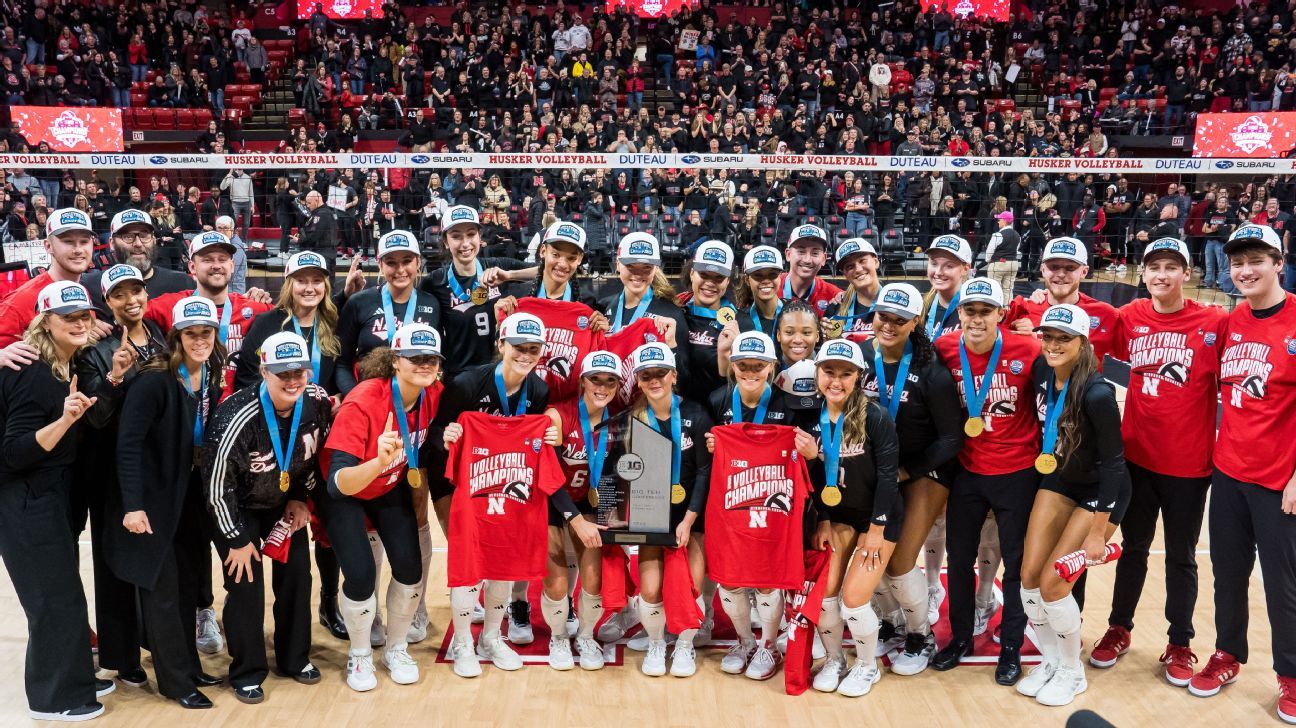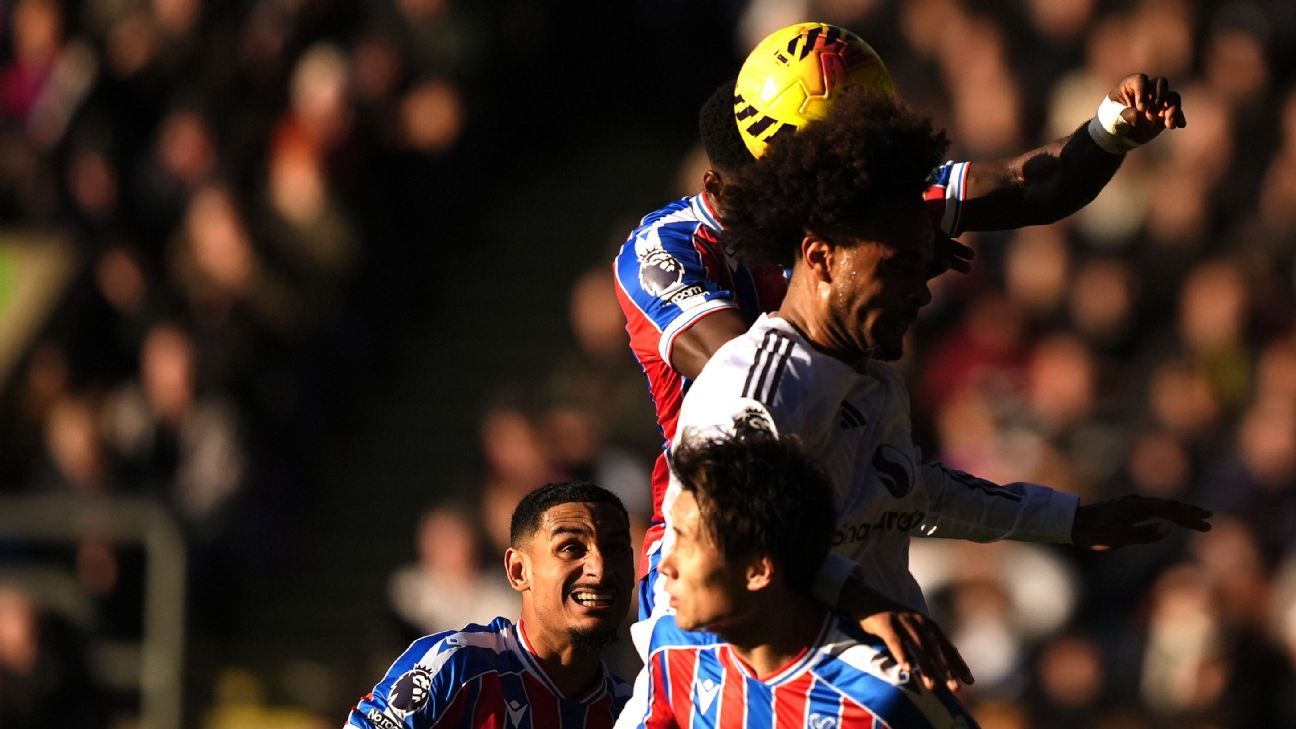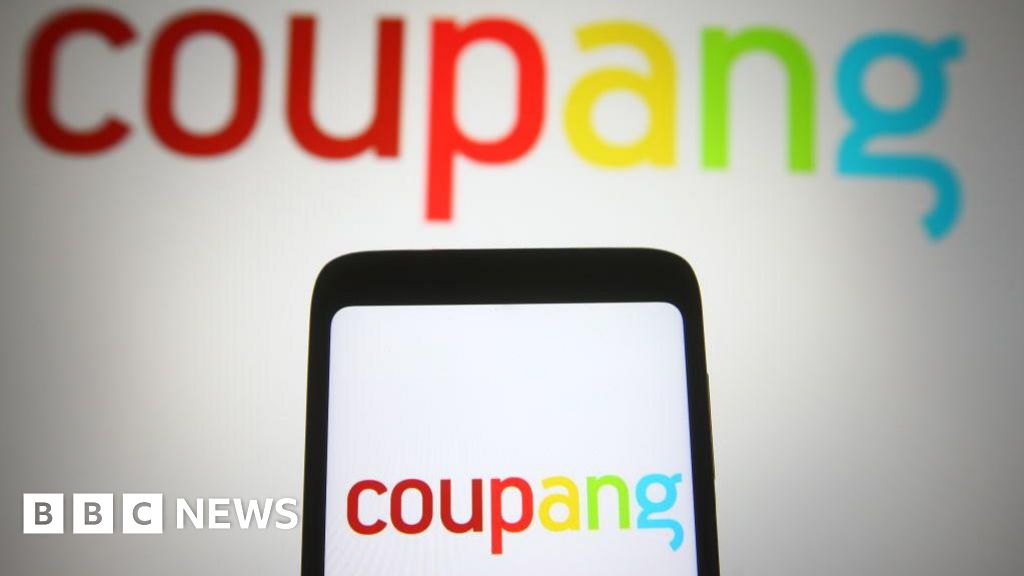Sports
How mid-major coaches are embracing — or resisting — being high-major launchpads

Posted up against a wall of the air-conditioned gym at Peach Jam in mid-July, Tulane coach Ron Hunter prepared to greet an approaching SEC colleague, expecting a handshake and pleasantries. But his powerhouse peer had other intentions for the interaction with Hunter, who has developed multiple players who have transferred to elite programs — including former Duke star Sion James — in recent years.
“He came over to me and he said, ‘Ron, you’re doing a hell of a job … getting kids ready for our level,'” Hunter told ESPN at the basketball camp in North Augusta, South Carolina. “And I didn’t know whether to be mad or to say thank you.”
Hunter’s reaction captures the conundrum facing mid-major coaches as their programs seemingly evolve into high-major launchpads. At Tulane, James and Kentucky transfer Kam Williams launched their college careers before moving onto bigger brands; they are just two examples of a trend that is reflected among college basketball’s biggest stars. Three of last season’s AP All-Americans — Mark Sears (Alabama), Johni Broome (Auburn) and Walter Clayton Jr. (Florida) — were mid-major transfers, with 60% of the first- and second-team selections from high-major schools having started at the mid-major level.
Once reluctant to accept that a feeder system is developing within the sport, more and more mid-major coaches believe they can leverage that reality to attract top talent who want to star for power-conference programs one day. And while some still resist embracing the role of being a high-major pipeline, they still acknowledge there’s a wave to ride.
“I try not to be the last person selling CDs out of the trunk of my car,” Wyoming coach Sundance Wicks said. “Nobody’s buying CDs anymore, so you can’t be the last person selling CDs out of your trunk to recruits or to families or to agents or to the players. You’ve got to get with the times.”
Fifteen.
That’s how many players jumped ship after Andy Kennedy’s UAB Blazers squad won 24 games and reached the American Conference tournament championship game last season.
It’s a list that includes Yaxel Lendeborg, ESPN.com’s No. 3 transfer in 2025-26, who picked Michigan. But rather than sulk over those losses to the portal, Kennedy leaned into the narrative. He has been selling his program to the next surge of recruits as a stepping stone to the high-major level — with a PowerPoint presentation. It compares what his top departing players earned last season to the size of the paychecks they will collect at their new schools. The message was simple: Spend some time in Birmingham, get rich a year or two later.
“Adapt or die, bro,” Kennedy told ESPN. “I’m old-school. But I also understand that I can be stubborn if I want to be and take a bunch of L’s and be frustrated for the rest of my life — or I can adapt to current circumstances and the limitations, from a financial standpoint, that you have at a non-Power 5 level.
“We all ball on a budget. We can be mad about it or we can just try to do the best that we can to figure out what works for us.”
Winning remains the ultimate goal for Kennedy, who has averaged 25 victories per season at UAB since his arrival in 2020-21 and has reached the NCAA tournament twice. He also craves the player retention once common for coaches in his spot. But he recognizes his program is better off adapting to the shifting culture instead of dismissing it.
Former Duke star Nolan Smith understands the appeal for players; he experienced college basketball on the biggest stage, winning a national title with the Blue Devils in 2010 before going onto the NBA. Though he will sell recruits on the benefits of Tennessee State, where he took over as coach in July, he also knows why some are working toward the experiences he had while playing at a larger school.
“I do not mind it at all,” Smith said. “As long as they buy into the [Tennessee State] culture and what we’re trying to build in the one year, two years that they’re here, I’m going to love ’em. And then when that time comes and [they] sarey, ‘Hey, Coach, I’d really love to go play in the ACC or SEC and I have an opportunity to go to one of those leagues and really see what it’s all about’ … I’m going to help them if that time comes.”
When the portal launched in 2018, it opened the door for mid-major players who previously might have been overlooked in high school to pursue their professional goals by playing at a more premier college later in their careers: Since 2016, 30 mid-major-to-high-major transfers have been drafted to the NBA, according to ESPN Research.
And with the introduction of name, image and likeness deals in 2021, transferring also came with the opportunity to earn cash that most non-power-conference schools couldn’t match.
According to Opendorse, a clearinghouse used by schools to process NIL transactions, the average payout for elite players at high-major programs last season easily topped seven figures: $2.9 million for a top guard, $2.8 million for a top forward and $2.3 million for a top center. Less than 10% of the players who earned $100,000 or more at the Division I level last season competed outside of the Big 12, ACC, Big East, Big Ten or SEC.
Wyoming’s Wicks has a vision for how the jump from mid-major to high-major could benefit programs the way it benefits some players: an official feeder system that could turn the possibility of players transferring from a risk into a strategy.
With the loss of 2024-25 Mountain West Newcomer of the Year Obi Agbim (17.6 points per game) — along with nearly a dozen other players via the portal — Wicks already had to rebuild his roster. He said a real relationship between multiple schools, comparable to Major League Baseball and its minor league system, could help everybody.
“If we were working with Iowa or we were working with NC State — I know both Ben McCollum and Will Wade really well — and said, ‘Hey, we’ve got guys here for two years, and after two years, most of our guys right now are looking to [move up].’ And after two years, we meet with the three to four teams that are in our cohort — mid-majors, high-majors alike — I mean, that’s a G league, right?
“That’s a farm system, but professional sports are already doing that. We would just have to fall into that.”
A few years ago, the idea might have seemed farfetched. But not anymore. The turbulence that has come with the transfer portal has demanded ingenuity and innovation from coaches who have been forced to adjust to remain competitive amid constant change.
Loyola Chicago coach Drew Valentine experienced the underbelly of this effect in February. As his team chased an Atlantic 10 regular-season title while riding a winning streak, he had discovered high-major coaches were courting some of his best players long before the portal opened in late March.
“In February, I had two guys, the best guys that I could get back next season, who were showing me vanish mode DMs from coaches,” Valentine told ESPN. “I’m not going to name names, but I called a couple of Power 5 coaches directly and said, ‘Can you please wait until after the season at least? We’ve got regular-season games left.’ So, that stuff is real.”
The meddling that unfolds throughout the season has been frustrating for Valentine, who was an assistant during the Ramblers’ Cinderella run to the Final Four in 2018. He said he respects the drive of mid-major prospects who hope to play at a higher level one day, but if a player comes to him and talks about using Loyola Chicago as a stepladder to a more prominent stage, he’ll advise them to take their talents elsewhere.
“I can’t do that. I personally can’t,” Valentine said. “Maybe if I was in a position where we weren’t paying what we’re paying our guys, which I think moving forward in this current model, I think it’s going to be extremely competitive.'”
Valentine is nodding to the dawn of the revenue-sharing era. When NIL was the only way to pay athletes, schools such as Loyola Chicago were in a tough spot as compared with their wealthier peers. But the Atlantic 10 and other leagues that operate without the financial burden of Division I football could benefit from revenue-sharing rules. According to sources with knowledge of the current rev-share distributions, multiple A-10 teams have seven-figure coffers for men’s basketball, with some of those schools surpassing the money available to programs in the Big Ten.
While power-conference schools are likely to maintain an edge in NIL opportunities available to their athletes, revenue sharing should help some mid-major programs close the gap on what they can offer players — but others will continue to focus their pitches on the bigger roles than players would have at the high-major level.
“It’s about the opportunity, the responsibility, you would have in leadership on the floor,” Bradley coach Brian Wardle told ESPN, “and being the featured player while still giving them some kind of money.”
Even if revenue sharing puts the mid-majors in a more favorable position to negotiate with top players, the portal will continue to create chaos — and uncertainty — for programs at the end of each season.
When former Morehead State coach Preston Spradlin first discovered Johni Broome in a high school gym in Plant City, Florida, he said the future All-American and NBA draft pick was “skinny and slow.” With the Eagles, Broome blossomed into a back-to-back All-Ohio Valley Conference selection before signing with Auburn in April 2022, a team he led to a No. 1 ranking and the Final Four last season.
Spradlin, now at James Madison, said he is willing to talk to potential transfers about Broome’s journey and give them a chance to follow the same path but refuses to willingly turn his team into a Triple-A affiliate for power-conference programs.
“I hear of coaches using that in their recruiting pitch and saying, ‘Hey, come here for a year or two and we’ll get you ready, and we’ll get you a big payday and we’ll get you to that Power 5 level,'” Spradlin said. “We don’t do that, but we don’t run from the conversation, either.
“I’m not going to devalue everything that we have to offer here, which is at a really high level, and it’s all encompassing, right? We have a prestigious degree, we have an unbelievable fan base, all the things outside of just the almighty dollar and basketball.”
Beyond individual development, team success and cash, Spradlin and some of his peers believe they have to pitch other ways their programs can offer value to top prospects.
At St. Thomas-Minnesota, coach Johnny Tauer has sold prospects on a prosperous alumni base and a brand-new, $175 million arena. San Francisco coach Chris Gerlufsen tells recruits about the advantages of living in the Bay Area. And Howard coach Kenny Blakeney woos potential players with the opportunity to attend and graduate from one of the most recognizable historically Black colleges and universities in the country.
But how much does all of that matter?
Tulane’s Hunter wasn’t sure after his unexpected interaction with his SEC counterpart at Peach Jam. The high-energy coach — you might remember him as the guy who fell off his chair after his son, R.J. Hunter, hit the game winner in Georgia State‘s second-round game against Baylor during the 2015 NCAA tournament — was left speechless after the exchange.
“Usually, I’m never at a loss for words,” Hunter said. “I had nothing to say to him. I didn’t know whether to say thank you or to get pissed at him.
“But he was right.”
Sports
Huskers earn top overall seed in volleyball tourney

Undefeated Nebraska earned the No. 1 overall seed in the NCAA women’s volleyball tournament bracket released Sunday.
The five-time national champion Huskers (30-0) have dominated this season, dropping just seven sets. They lead Division I in hitting percentage at .352.
Dani Busboom Kelly, who won NCAA titles as both a Nebraska player and assistant, took over at her alma mater this season after longtime Huskers coach John Cook retired. Busboom Kelly led Louisville to the NCAA final in 2024, where the Cardinals lost to Penn State.
The other No. 1 seeds are Kentucky, Texas and Pitt. The Wildcats have won one NCAA title, and the Longhorns have four. The Panthers reached the final four the past four seasons but lost in the semifinals each time.
Pitt and Stanford finished tied atop the ACC at 18-2, and the Cardinal won their head-to-head matchup 3-2 at Stanford on Nov. 14. But the Panthers’ overall body of work secured them the last No. 1 seed, while nine-time NCAA champion Stanford is the No. 2 seed in Texas’ region.
SEC regular-season and tournament champion Kentucky defeated Texas 3-2 in the conference tournament final. They would face each other in the national semifinals should they advance that far.
Defending national champion Penn State, the only school that has appeared in every NCAA tournament dating back to the event’s start in 1981, is a No. 8 seed in Texas’ quarter of the bracket. St. Thomas (Minnesota) and Toledo are both making their first appearance in the tournament.
The Big 12 led all leagues with 10 teams in the field, the Big Ten has nine, the ACC seven and the SEC five.
Early-round matches will be held from Dec. 4 to 6 on campus sites. The regionals, scheduled for Dec. 11-14, will be hosted by the four highest seeds still standing in each quarter of the bracket.
The final four is at T-Mobile Center in Kansas City, Missouri, for the third time in the tournament’s history. It was there that Penn State won the championship in 2010 and Nebraska won its most recent title in 2017.
The national semifinals are Dec. 18 (ESPN), and the championship match is Dec. 21 (ABC).
Sports
Commanders vs. Broncos live updates: Washington tightens up in red zone, yields field goal
The Commanders return from their bye week searching for their first victory since Oct. 5. It won’t be easy against the Broncos, who have won eight straight.
Source link
Sports
Ruben Amorim: Man United ‘steal’ set-piece routines from rivals

Ruben Amorim has said that Manchester United are “stealing” set-piece routines from other clubs after goals from two free-kicks helped earn a valuable 2-1 win over Crystal Palace.
United came from behind at Selhurst Park thanks to second-half goals from Joshua Zirkzee and Mason Mount, both of which came from Bruno Fernandes set plays.
Amorim’s team have now scored 10 Premier League goals from set-pieces this season — joint most with table-toppers Arsenal.
“We work a lot,” Amorim said when asked about United’s improvement at set-pieces.
“We have more time to work, we work a lot and we learn a lot in England.
“I think you are used to seeing that, but when you come for the Premier League you learn a lot with other teams how to do it and we are stealing a lot of things to score goals.”
United looked destined for another set-back following Monday’s defeat to 10-man Everton when Crystal Palace went in at half-time 1-0 up thanks to a retaken penalty from Jean-Philippe Mateta.
But there was marked improvement in their performance after the break as Amorim’s team recorded just their second league win away from home since March.
“I just said to the players we need to be more alive and you can feel that,” Amorim said.
– Mason Mount, Joshua Zirkzee inspire Man United comeback win at Crystal Palace
– Zirkzee leads Man United comeback in game of two halves vs. Palace
– Premier League table
“So if you are more alive, you are in more places, you are near the ball more often. I think everyone did that.
“But we also need to understand that the opponent was tired also in the second half.
“And when you increase the rhythm and the opponent gets tired a little bit, suffers right away a goal, you felt that we had the control of the game and that’s it.”
-

 Sports1 week ago
Sports1 week agoWATCH: Ronaldo scores spectacular bicycle kick
-

 Entertainment7 days ago
Entertainment7 days agoWelcome to Derry’ episode 5 delivers shocking twist
-

 Politics7 days ago
Politics7 days agoWashington and Kyiv Stress Any Peace Deal Must Fully Respect Ukraine’s Sovereignty
-

 Business1 week ago
Business1 week agoKey economic data and trends that will shape Rachel Reeves’ Budget
-

 Tech5 days ago
Tech5 days agoWake Up—the Best Black Friday Mattress Sales Are Here
-

 Fashion7 days ago
Fashion7 days agoCanada’s Lululemon unveils team Canada kit for Milano Cortina 2026
-

 Tech5 days ago
Tech5 days agoThe Alienware Aurora Gaming Desktop Punches Above Its Weight
-

 Politics1 week ago
Politics1 week ago53,000 Sikhs vote in Ottawa Khalistan Referendum amid Carney-Modi trade talks scrutiny






